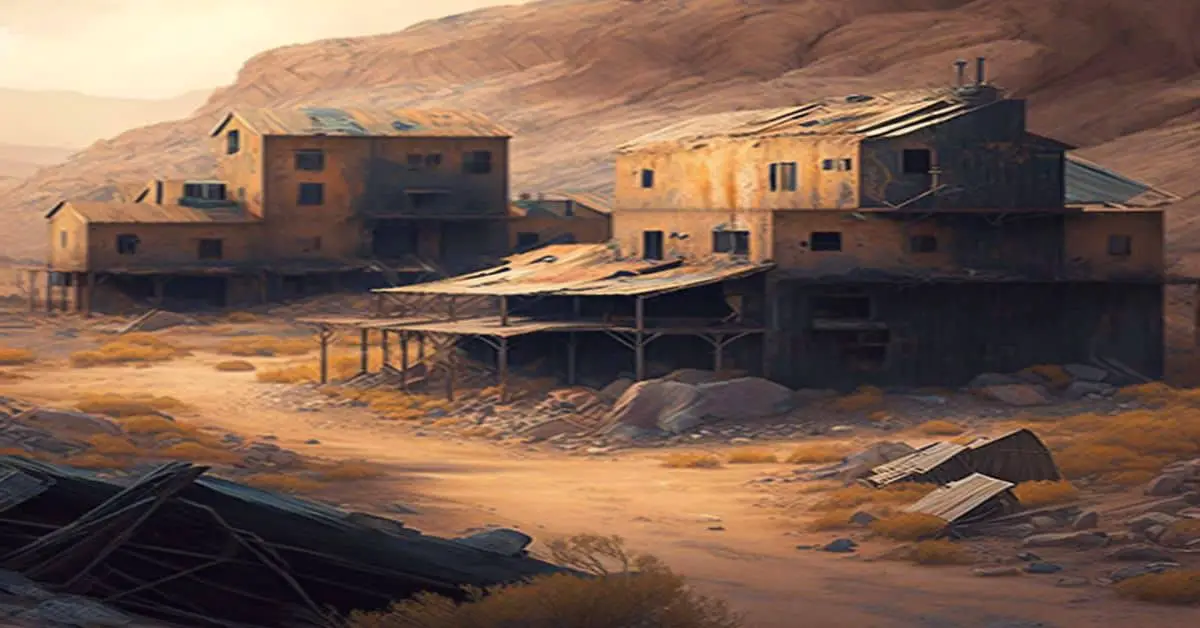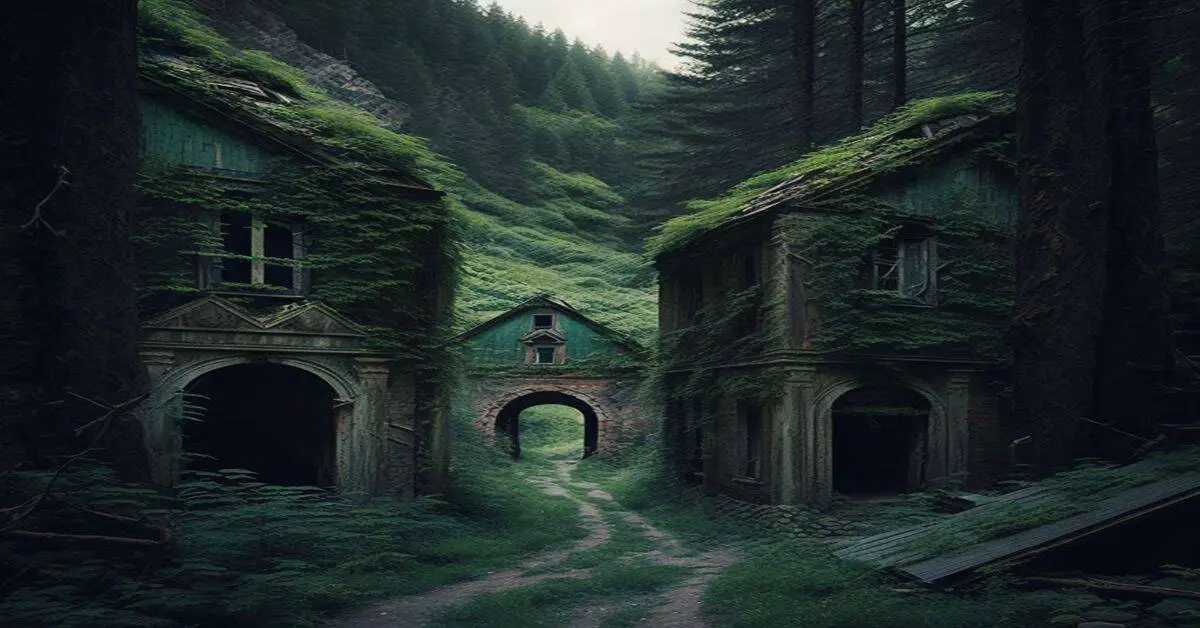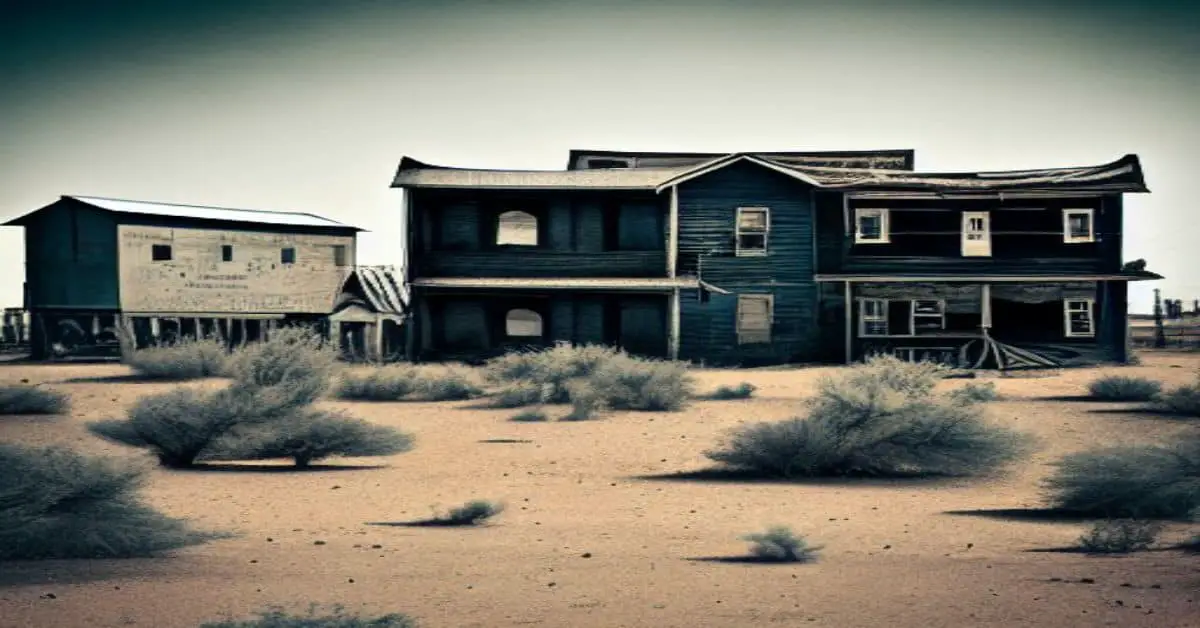Nestled in the rugged mountains of Colorado lies a forgotten relic of the 19th century mining boom – Red Mountain Ghost Town. This once-thriving community now stands as a testament to the resilience and determination of the hardy souls who ventured west in search of fortune.
Despite its remote location and harsh climate, Red Mountain Town was once a bustling hub of activity and prosperity, attracting many miners and settlers from all over the country.
In this article, we aim to explore the history and origins of Red Mountain Ghost Town, delving into the factors that led to its rise and eventual demise. We will examine the population and prosperity of this forgotten town, shedding light on the lives and challenges faced by its residents.
Finally, we will take a closer look at the remains of Red Mountain Town and the opportunities for exploration it presents to visitors. Join us as we embark on a journey through time, discovering the stories and secrets of Colorado’s Red Mountain Ghost Town.
Key Takeaways
- Red Mountain Ghost Town was a prosperous mining town in the late 1870s that played a significant role in the development of Colorado’s mining industry.
- The town’s economic impact was significant, with an estimated $30 million in gold, silver, lead, zinc, and copper taken from its mines.
- Despite the harsh winters and primitive, dangerous mining techniques, the town’s population was estimated to be as high as 10,000 during the early boom years.
- Today, visitors can explore the remains of the once-thriving town, including the iconic leaning cabin, collapsed cabins, and scattered mining artifacts, offering a unique opportunity to reflect on the legacy of American mining towns and the human stories buried beneath their ruins.
History and Origins
The history and origins of Red Mountain Town can be traced back to the late 1870s when ore was discovered on the Red Mountain Pass. This discovery led to a stampede of miners and investors who were eager to strike it rich. The town quickly absorbed a number of smaller camps and became King of the Mountain.
Although severe winters and lack of transportation delayed the initial rush, Red Mountain Town eventually became one of the most prosperous and colorful towns of its day, attracting Eastern and European investors who poured millions into the region and took out millions in return.
Mining techniques were crucial to the town’s economic impact. The estimated thirty million dollars in gold, silver, lead, zinc and copper taken from the mines would not have been possible without advanced mining technology. Despite the harsh conditions and difficult terrain, miners could extract valuable metals from the earth using techniques such as underground mining and using explosives.
As a result, Red Mountain Town played a significant role in the development of Colorado’s mining industry, leaving a lasting legacy that can still be seen in the area’s remaining mining remains and collapsed cabins.
Population and Prosperity
During the early boom years, Red Mountain Town’s population was estimated to be as high as 10,000, making it one of its day’s most prosperous and colorful towns.
This influx of people was driven by the discovery of ore on Red Mountain Pass in the late 1870s, eventually leading to the absorption of smaller camps and the town becoming ‘King of the Mountain.’
The town’s economic impact was significant as eastern and European investors poured millions into the region and took out millions, with an estimated thirty million dollars in gold, silver, lead, zinc, and copper taken from the mines.
Despite the town’s prosperity, mining techniques during this time were primitive and dangerous. Miners faced hazardous conditions, including collapsing mines and the risk of explosion. Furthermore, the harsh winters made transporting goods and equipment difficult, leading to mining operations delays.
Despite these challenges, Red Mountain Town remained prosperous for several decades, with the town’s population gradually decreasing as the mines began to run dry.
Today, the remains of the town serve as a reminder of the challenges and triumphs of early mining communities in the American West.
Remains and Exploration
Remnants of the once-prosperous mining town can still be observed today, serving as a testament to the challenges and triumphs of early American mining communities. While most of the structures in Red Mountain Town have collapsed or been dismantled, a few abandoned buildings and mining artifacts remain. Visitors can explore the remains of the town and imagine what life was like during the mining boom years.
- The leaning cabin, which is the town’s most iconic structure, provides a striking image of the harsh conditions that miners faced in their daily lives. The cabin’s precarious tilt suggests the unstable nature of the town’s construction and the difficulty of building in the rugged mountain terrain.
- The collapsed cabins, on the other hand, represent the fleeting nature of mining towns. These structures were hastily erected with the expectation that they would be temporary, and their rapid deterioration underscores the transience of the town’s prosperity.
- The mining artifacts scattered throughout the town also offer a glimpse into the town’s past. Rusty mining equipment and abandoned tunnels provide a tangible connection to the miners who once toiled in the town’s mines, reminding visitors of the sacrifices and dangers they faced in pursuing wealth.
Overall, exploring Red Mountain Town’s remains offers a unique opportunity to reflect on the legacy of American mining towns and the human stories that lie buried beneath their ruins.
Frequently Asked Questions
What caused the decline of Red Mountain Town and when did it become a ghost town?
The exhaustion of mineral resources, labor strikes, and the advent of World War I caused the decline of Red Mountain Town. The town became a ghost town in the early 1920s, leaving behind abandoned buildings and mining remains.
Were there any notable figures or events associated with the town’s history?
Notable figures associated with Red Mountain Town include Otto Mears, who built the toll road over Red Mountain Pass, and Marshall “Buckskin”Joe Hower, a colorful lawman. The town saw several historical events, including the San Juan County War and the Great Fire of 1899.
What types of mining techniques were used in the Red Mountain Pass area?
Mining techniques used in Red Mountain Pass included shaft mining and hydraulic mining, with the former being more common due to the mountainous terrain. These methods significantly impacted local wildlife and the environment, leading to ongoing restoration efforts.
Are there any legends or ghost stories associated with Red Mountain Town?
There are haunted tales and local folklore associated with Red Mountain Town, including reports of ghost sightings. Paranormal investigations have been conducted, but the validity of these claims remains unverified.
How has the surrounding landscape and environment changed since the town’s heyday?
Red Mountain Town’s surrounding landscape and environment have undergone significant changes since its heyday due to environmental impact and natural disasters. These include deforestation, erosion, landslides, and flooding, altering the topography and ecology of the area.


